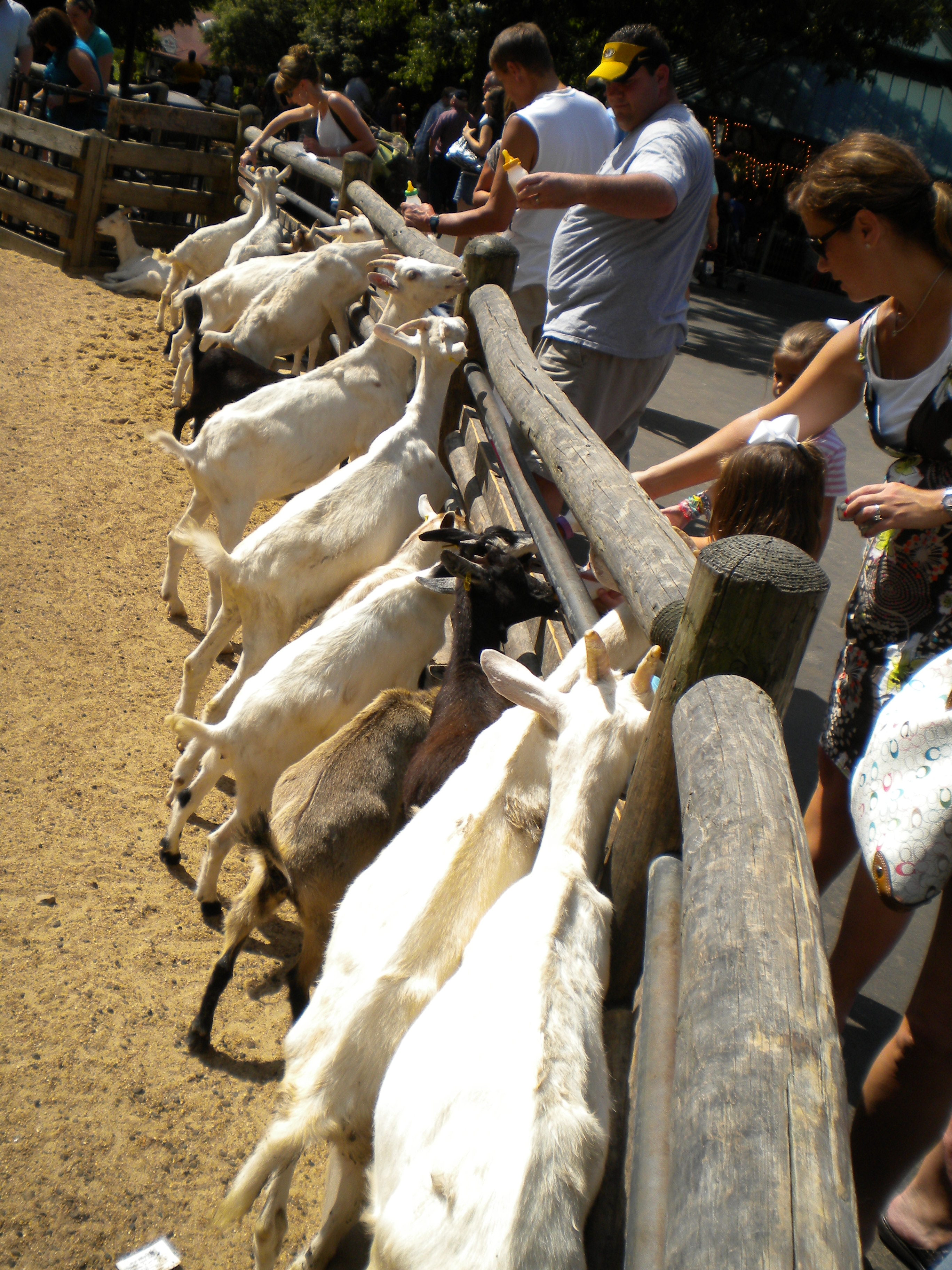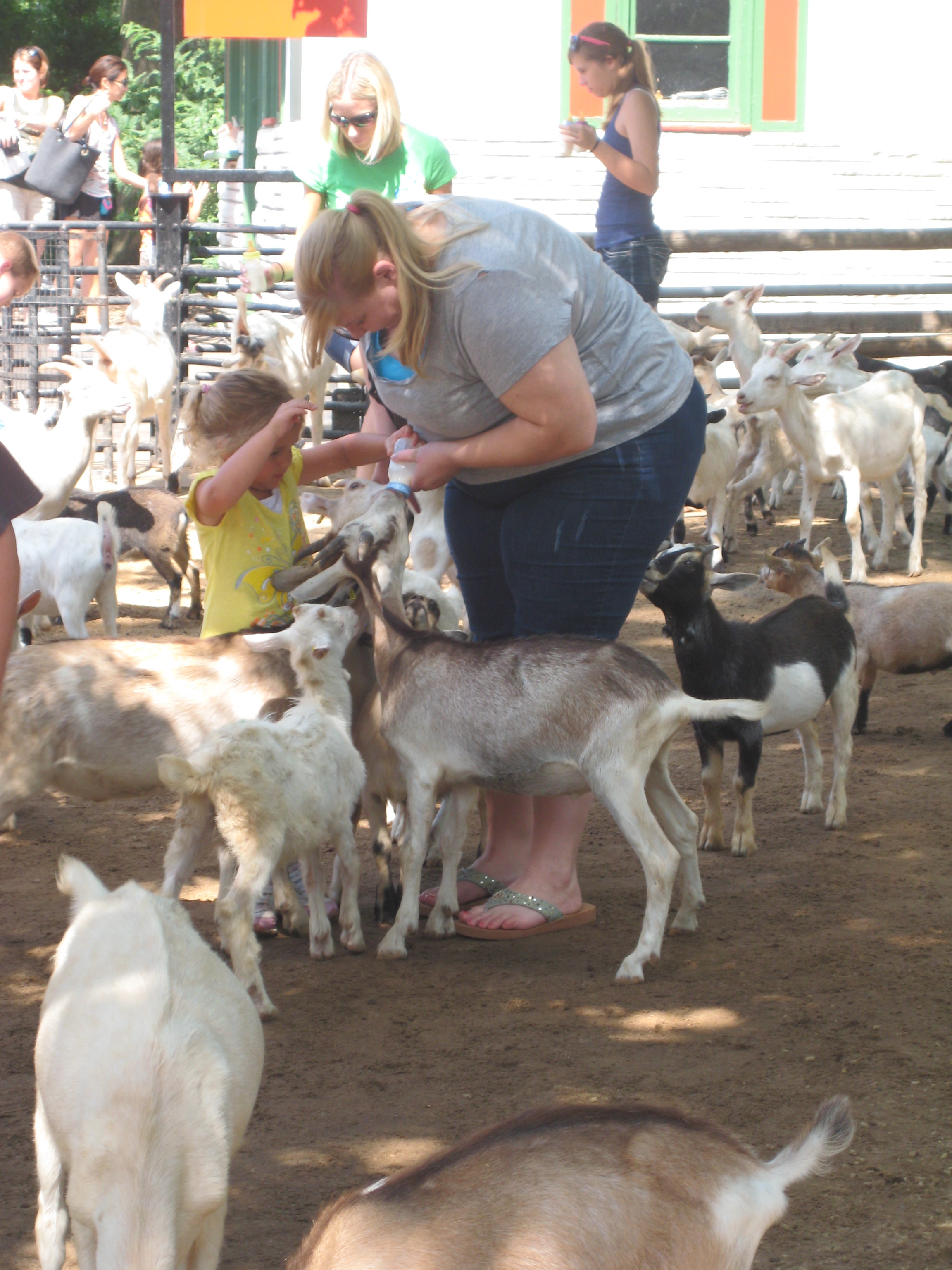 I find it physically impossible for me to get enough animal interaction. I suppose that means I must’ve chosen the right profession: Veterinary Medicine. I’m a frequent patron of Sunset Zoo here in Manhattan, Kansas, but during my last visit I was sad to learn that the petting zoo area was sectioned off from the public. Zoo patrons are still able to go up to the fence to pet the goats, but they can no longer walk amongst them in their enclosure. I have no idea if this change had to do with any of the recent petting zoo outbreaks, but I suppose it’s a step in the right direction for public health.
I find it physically impossible for me to get enough animal interaction. I suppose that means I must’ve chosen the right profession: Veterinary Medicine. I’m a frequent patron of Sunset Zoo here in Manhattan, Kansas, but during my last visit I was sad to learn that the petting zoo area was sectioned off from the public. Zoo patrons are still able to go up to the fence to pet the goats, but they can no longer walk amongst them in their enclosure. I have no idea if this change had to do with any of the recent petting zoo outbreaks, but I suppose it’s a step in the right direction for public health.

The large number of sick kids resulted from a combination of poor food safety information and slow reporting by health officials. There are quite a lot of petting zoos that do things wrong, such as not providing access to handwashing stations after animal interaction. This past weekend I visited a petting zoo in St. Louis, and I was pleased to see some food safety signs posted outside the gate of the animal area and also by the handwashing station right next to the animals.
The petting zoo I visited was inside of
http://www.grantsfarm.com, a historic plot of land within St. Louis formerly owned by Gen. Grant and currently operated by the Busch family. The petting zoo was entirely made up of goats, and for a few dollars patrons could purchase a baby bottle full of milk to feed to the goats. The handwashing stations with soap and water right next to the exits satisfied my public health concerns. However, I would’ve been happier with paper towels for drying rather than the hand dryers that were available.
.jpg)
I was also happy about the signs posted around the petting zoo that read,
In accordance with the U.S. Center for Disease Control and Prevention, we provide hand washing stations, antibacterial soap, warm water, and air hand dryers for visitors to our animal interaction areas. Additionally, petting brushes are available to reduce hand contact with the animals.
Posted below was,
Pregnant women, senior citizens and immunocompromised persons are at higher risk of serious infections. When contacting animals, Grant’s Farm suggests heightened precautions, and children under 5 years be closely supervised.
Of course these signs were nice to have around, but it doesn’t mean anything if parents don’t read them. Unfortunately I saw quite a few kids with their hands in their mouths inside the petting enclosure. I think Grant’s Farm did a good job of informing the public of the risks while still encouraging people to pet the animals. The petting brushes are a germ-a-phobe’s dream, though I didn’t use one.
All in all, the kids had a blast and the goats were fed. And now I have 52 pictures of goats on my camera.
I find it physically impossible for me to get enough animal interaction. I suppose that means I must’ve chosen the right profession: Veterinary Medicine. I’m a frequent patron of Sunset Zoo here in Manhattan, Kansas, but during my last visit I was sad to learn that the petting zoo area was sectioned off from the public. Zoo patrons are still able to go up to the fence to pet the goats, but they can no longer walk amongst them in their enclosure. I have no idea if this change had to do with any of the recent petting zoo outbreaks, but I suppose it’s a step in the right direction for public health.
.jpg) I was also happy about the signs posted around the petting zoo that read,
I was also happy about the signs posted around the petting zoo that read,
 With Doug and Amy on the
With Doug and Amy on the